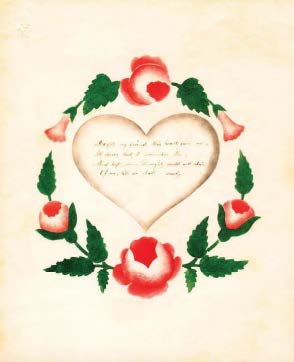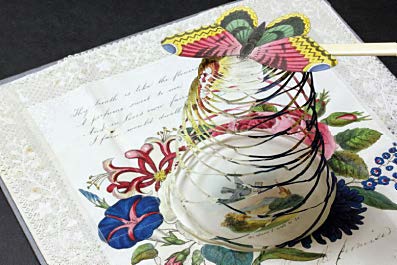
2. FLOWERS. FLOWERS. FLOWERS.
The "language of flowers," or floriography, came to Europe from the Ottoman Empire in the early 1700s. The red rose is well known as the symbol of romantic love, but almost all flowers have their own meaning; for a list, go to Almanac.com/flower-meaning.
Lesson: Blooms always help your love to blossom.
3. FEEL FREE TO BE MYSTERIOUS.
Polite society in the 18th and 19th centuries demanded that men and women keep their passions to themselves, so Valentine's Day flourished. Anyone could reveal his/her true feelings without risking humiliation.
"Valentines were generally sent anonymously," Rosin says. "If they were marked, sometimes it was just the initials, or the name written backward, or it just said, 'From a serious admirer.'" Part of the game was identifying the sender, Rosin says.
Lesson: It's okay to be coy.

4. BE BOLD.
German-Americans in 18th-century Pennsylvania created "illuminated" valentines featuring Frakturfont calligraphy and decorated borders, as well as cards with cutout silhouettes. By the early 19th century, more elaborate devices such as pull-out tabs and secret messages had become all the rage, as valentines evolved to become more embellished with artistic touches like gilding and embossing.
Lesson: Innovation is seductive.
Photos, from top: The Nancy Rosin Collection; John Johnson Collection at the Bodleian Library, University of Oxford